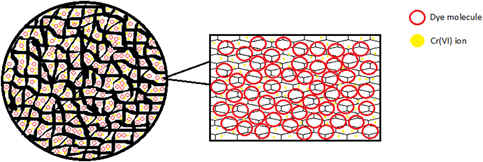Crossref Citations
This article has been cited by the following publications. This list is generated based on data provided by
Crossref.
Zhang, Xin
Zhang, Xianwen
and
Wang, Chongmin
2019.
Building advanced materials via particle aggregation and molecular self-assembly.
Journal of Materials Research,
Vol. 34,
Issue. 17,
p.
2911.
Yu, Fang
Chen, Yuantao
Wang, Yunsheng
Liu, Chen
and
Qin, Jianxian
2020.
Synthesis of metal–organic framework nanocrystals immobilized with 3D flowerlike Cu–Bi-layered double hydroxides for iodine efficient removal.
Journal of Materials Research,
Vol. 35,
Issue. 3,
p.
299.
Leiva, Eduardo
Tapia, Camila
and
Rodríguez, Carolina
2021.
Highly Efficient Removal of Cu(II) Ions from Acidic Aqueous Solution Using ZnO Nanoparticles as Nano-Adsorbents.
Water,
Vol. 13,
Issue. 21,
p.
2960.
Zhou, Dengfeng
Li, Daiyuan
Li, Ang
Qi, Mingli
Cui, Dapeng
Wang, Hui
and
Wei, Huige
2021.
Activated carbons prepared via reflux-microwave-assisted activation approach with high adsorption capability for methylene blue.
Journal of Environmental Chemical Engineering,
Vol. 9,
Issue. 1,
p.
104671.
Karimi-Maleh, Hassan
Ayati, Ali
Ghanbari, Saeid
Orooji, Yasin
Tanhaei, Bahareh
Karimi, Fatemeh
Alizadeh, Marzieh
Rouhi, Jalal
Fu, Li
and
Sillanpää, Mika
2021.
Recent advances in removal techniques of Cr(VI) toxic ion from aqueous solution: A comprehensive review.
Journal of Molecular Liquids,
Vol. 329,
Issue. ,
p.
115062.
Zhang, Libo
Tan, Junyan
Xing, Gangying
Dou, Xintong
and
Guo, Xuqiang
2021.
Cotton stalk-derived hydrothermal carbon for methylene blue dye removal: investigation of the raw material plant tissues.
Bioresources and Bioprocessing,
Vol. 8,
Issue. 1,
Mahmoud, Mohamed E.
Elsayed, Sarah M.
Mahmoud, Safe ELdeen M.E.
Aljedaani, Reham O.
and
Salam, Mohamed Abdel
2022.
Recent advances in adsorptive removal and catalytic reduction of hexavalent chromium by metal–organic frameworks composites.
Journal of Molecular Liquids,
Vol. 347,
Issue. ,
p.
118274.
Ramya, Vijayan
Murugan, Devaraj
Lajapathirai, Chokkalingam
Meenatchisundaram, Sivarajan
and
Arumugam, Sivasamy
2022.
A composite adsorbent of superparamagnetic nanoparticles with sludge biomass derived activated carbon for the removal of chromium (VI).
Journal of Cleaner Production,
Vol. 366,
Issue. ,
p.
132853.
Taurbekov, Azamat
Abdisattar, Alisher
Atamanov, Meiram
Yeleuov, Mukhtar
Daulbayev, Chingis
Askaruly, Kydyr
Kaidar, Bayan
Mansurov, Zulkhair
Castro-Gutierrez, Jimena
Celzard, Alain
Fierro, Vanessa
and
Atamanova, Tolganay
2023.
Biomass Derived High Porous Carbon via CO2 Activation for Supercapacitor Electrodes.
Journal of Composites Science,
Vol. 7,
Issue. 10,
p.
444.
Jlassi, Chayma
Jabli, Mahjoub
Agougui, Hassen
and
Abdessalem, Saber Ben
2024.
Preparation of activated carbon from Zilla spinosa biomass by means of microwave for efficient bio-sorption of hazardous methylene blue colorant from water.
Biomass Conversion and Biorefinery,
